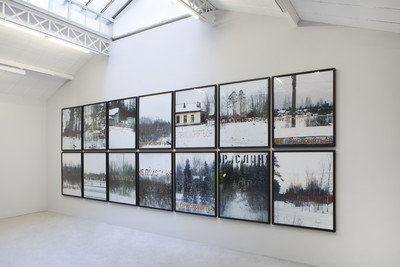Kamel Mennour is proud to present “Stances” by Marie Bovo.
Marie Bovo’s “Cтансы (Stances)” series, which was exhibited for the first time at Les Rencontres d’Arles in the Église Trinitaire in Arles, was created over a series of long train journeys across Russia in the winter of 2017. Bovo invites us to follow the unfolding of a journey with no aim but itself, between past and present, in a universe of solitude and poetry, appearing always the same and yet never exactly identical. With each stop, Bovo captured the landscape...
Read more


















